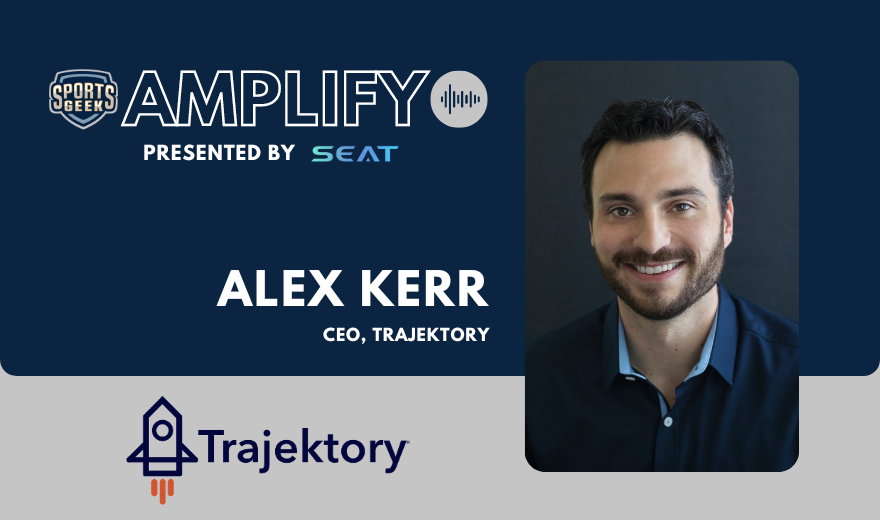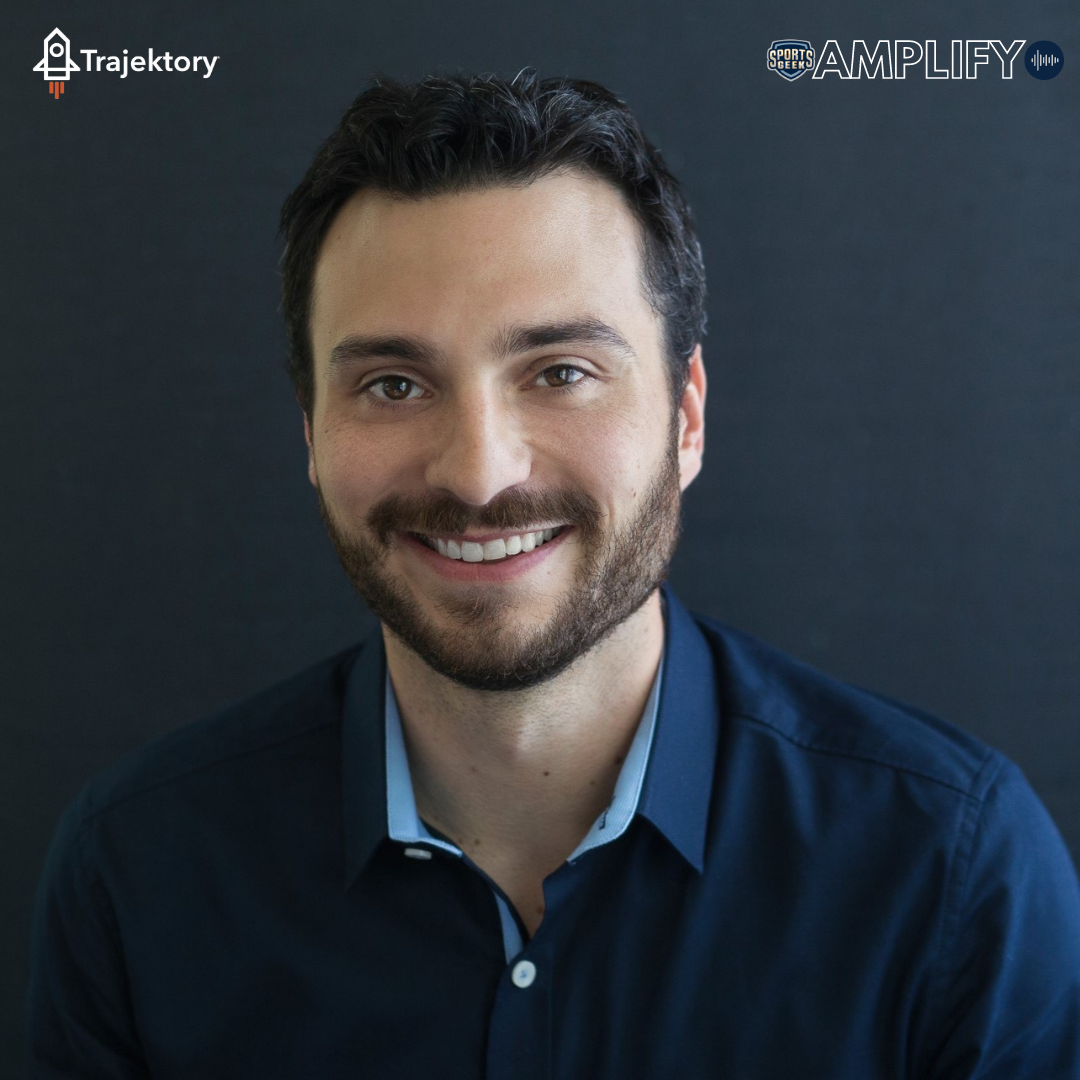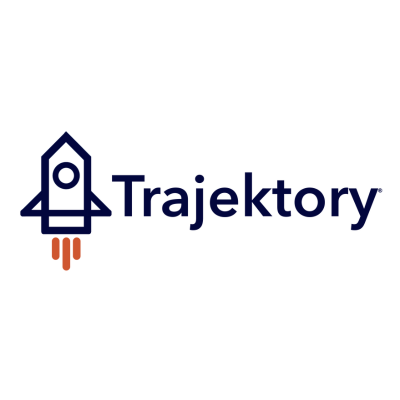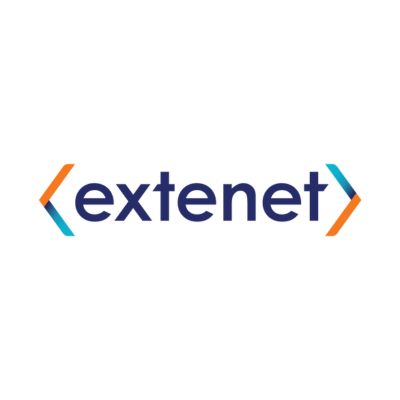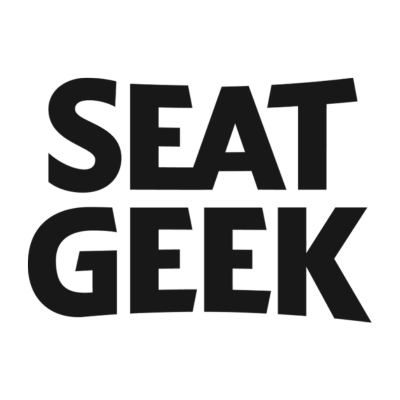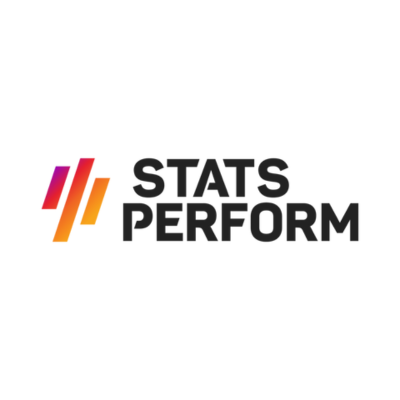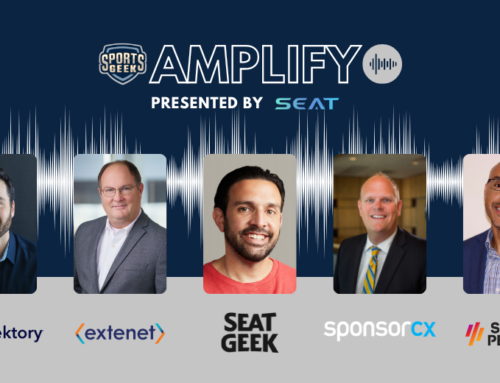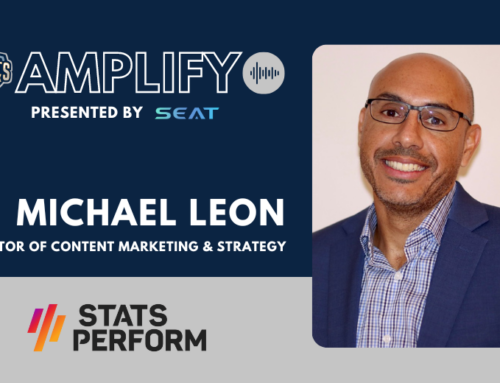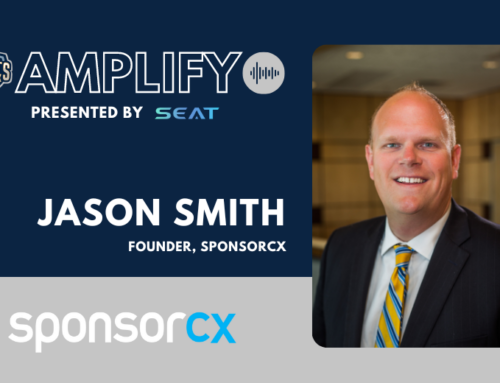Trajektory is a digital and non-digital partnership data platform – because sponsorship is more than just social and TV broadcasts.
Learn about Trajektory, a platform that helps sponsors and rights holders keep track of sponsorship assets and measure their effectiveness.
In this Sports Geek Amplify episode, Alex Kerr from Trajektory dives deep with Sean on how sponsorship, measurement and valuation have increased revenue for rights holders and value for partners.
What you'll learn from Alex Kerr
We're trying to help people drive revenue. We're trying to help people understand where they're succeeding, where they're failing, and how they can make optimization.
Please be kind. Transcribed by bots may contain some errors.
Sean Callanan (00:01.077) Welcome to Sports Geek Amplify presented by SEAT. SEAT will be in Salt Lake City, July 14, 15, 2023. You can register at SEATconference.com. That is who is presenting this series of Sports Geek Amplify. In this episode, we are talking with Alex Kerr from Trajectory. Alex, welcome to the podcast.
Alex Kerr (00:24.458) Yeah, thanks for the invite. Happy to be here. Long time listener, first time participant, I guess is the what you would say.
Sean Callanan (00:31.837) Yeah, well, we will take that. And again, I guess I have to start. I mean, I started Sports Geek saying we needed more Sports Geek in the world, and I used the phrase, steal with pride. First of all, I love the t-shirt. So I love seeing more Sports Geeks in the world. My lawyers say I haven't got a leg to stand on when I keep telling people to steal stuff. So great to see you repping Sports Geek.
Alex Kerr (00:54.614) that way to get the legal cease and desist letter at some point.
Sean Callanan (00:58.209) No, exactly, exactly. So first of all, like what I wanna know is, I guess find a bit more about your founder story and how trajectory came to be before we sort of dive in on the product itself and what it does. Yeah, how did you get your start and how did you become, you know, move from sport to being a founder of a product?
Alex Kerr (01:21.67) Uh, yeah. I mean, I think the, the origin story, which might be different from some is I actually never ever anticipated working in the sports entertainment industry. I sort of incidentally, but very fortunately fell into it during, uh, during grad school and I was getting my MBA and I had a really great opportunity to mesh data analytics with strategy and with marketing at monumental sports and entertainment out in Washington, DC. So worked in the marketing department, helped build their initial business.
Alex Kerr (01:50.07) business intelligence department out there and was working on all things, primary, secondary research. But one of the things that fell under my purview with my team was sponsorship data and analytics. And lo and behold, we were responsible for having to storytell back to sponsors and how they performed at the end of the year. And it's one of those sort of interesting rites of passage. If you do analytics and reporting with sponsorship where it's not that easy and it's
Alex Kerr (02:18.894) super, super incomplete. And a lot of the reports that I think the industry at large puts together, reports in a lot of odd ways, right? We got you a million people came to the stadium, we sent out five emails, we posted to social 35 times and your value on television was worth 100 grand. Please spend $2 million with us next year. And so it was kind of always like hitting your head against the wall, trying to figure this stuff out and report with integrity.
Alex Kerr (02:46.658) So did that for a number of years, absolutely loved it. Had a lot of great people I worked with there. I eventually had a cool opportunity to go back to Chicago where I'm originally from, and I got to work on the brand side and all of a sudden I was investing tens of millions of dollars in sponsorship. And lo and behold, now that I'm cutting the checks, I was getting very little to absolutely no insight in return. Like here's a pretty picture of your brand, but that's about all we got. And so.
Alex Kerr (03:14.11) Over the course of a number of years, early in my career, sort of came to this understanding and sort of epiphany that data and reporting is systemically broken in the industry and it's really, really difficult to get to whether or not you're cutting the checks or doing the reporting. And so eventually said, to heck with this, you know, this is a problem. And I found a couple other like-minded individuals that had worked on the agency side and the brand side and the team side throughout their careers. And we said, there's got to be a better way to do it. And so.
Alex Kerr (03:42.006) We said the heck with it and started building trajectory in earnest to try to solve, I think, a problem that we had all seen, lived and breathed firsthand throughout the industry. So yeah, that's a little bit about background and how we got to where we are with trajectory.
Sean Callanan (03:57.721) So, I mean, that's a, it really deserves a mini series and we've really just skipped over it. But like, I guess, yeah, the fact that you worked on both sides and, you know, you use the term, you know, storytelling, because you're trying to, because it's sort of to fill in the gaps because you didn't have the actual numbers, because you were trying to bring them on the journey. And so is that sort of where the point, like the fact that you went from, hey,
Sean Callanan (04:25.529) there's those two parts of that mad scramble that recap time. Hey, did we deliver what we said we delivered? How do we tell them that? And like you said, it's, uh, the disparate nature of all the different pieces that you had to sort of try to give some cohesive manner, um, which becomes that storytelling. I mean, which, you know, it makes it sound made up and it's partly was cause you were sort of pulling pieces from different places. But then when you're on the brand side, like that was that, um,
Sean Callanan (04:54.701) there was more sophistication happening of why is this money going out? And needing some more harder numbers. Do you think the force, you know, the immovable force or the force was coming from the brand side for that justification piece? Is that where you sort of got more insight to say, they're not believing the story so to speak, and they need harder numbers. And it was, you know, CMOs that were pushing to get firmer numbers on what they were spending in the sponsorship space.
Alex Kerr (05:24.318) Absolutely. So I think you're dead on. It depends on the brand you're working with, right? Some brands will sit there and say, hey, look, we're comfortable investing $50 million a year in sponsorship, and we don't need the ROI or the data to prove it. But, you know, I think one of the things that we saw and we continue to see is in a post-COVID world, smarter brands are now being more accountable and they have to be more accountable internally, to your point.
Alex Kerr (05:48.782) to say, hey, like where are these dollars and cents going and does it make sense for us to spend it? And so, you know, one of the things that we at least had internally at our organization was, well, okay, we're fine taking risks and allocating cash and resources in places, but the smarter brands today are now starting to say, hey, like we're spending in sponsorship, that's fine, but is the juice worth the squeeze and are we getting this in return? And so I think a lot of the smarter brands today are
Alex Kerr (06:15.602) are certainly moving in that direction. So no, I think that's dead on.
Sean Callanan (06:20.105) And so from your product trajectory, what was your background? You know, you said you found some like-minded individuals, but how did you go from this is a problem to this is a product? Like I tell the story, I was formerly a geek, I used to code and do those kind of things. How did you start getting the product built? What was that initial journey like?
Alex Kerr (06:47.53) Wow. Um, that could probably be its own 45 minute conversation at least, and probably over over drinks to share. Um, it's so, so, you know, my background is, is traditionally in stats and math and business intelligence and strategy and data and analytics. And so for me, it was understanding that there's data over here, right. And there are ways to use high integrity. To.
Alex Kerr (07:14.622) extrapolate on that data into something that makes statistical sense and storytell with it. So I knew that there was data over here and there has to be a way to better aggregate this information and get it in front of the people that are really making decisions and that could be impactful for. But as it relates to coding and building a product is it's crazy to look back. I had no idea. Like, and you know, that's like, wow, I think we need a data warehouse and somehow this data has to be translated and somehow it has to be organized really well.
Alex Kerr (07:43.666) And so it was a pretty arduous process at the beginning to have to start out and have to figure out what are the things that I don't know that I need to become a better expert at and who are the people that, you know, I really need to help sort of bring this product and bring this idea to life. And so, you know, it's kind of cliche to say it takes a village, but, you know, the reality of it is it is kind of crazy to think about that you started in this place where you had an idea, but
Alex Kerr (08:11.458) to actually productize it and build it. And very fortunate for me. I had a couple of co-founders, one that was on the engineering side and one that had operations experience in her background. Without them, we never would have been able to do it. But there was a lot of work and a lot of, I think, methodical design that went into building a platform.
Alex Kerr (08:36.098) that was really going to do it the right way as opposed to I think a lot of technology which exists out there which is let's just run and we can sort of fix it later.
Sean Callanan (08:44.853) Yeah, and I think, you know, again, a lot of times that I was in tech products and in development mode, it was really the voice of the person coming up with the requirements of what they wanted and having a really strong understanding of what the customer wanted. And I think that's the advantage that you had. You'd been in the seat, you know, writing those recaps, trying to understand what had been sold and saying how it had been sold. So you knew what they wanted.
Sean Callanan (09:13.301) and the data they needed to pull and the reports that they wanted and how it would make their life easier there. But then you also had the brand side and the diving in of, well, we want these stats. So were you sort of talking to your geeks, which is, you need to be able to understand how to talk to your geeks, say, this is what I want it to look like and this is what I want the outputs to be. Do your great stuff in the black box underneath, but that's what we want.
Alex Kerr (09:39.518) Yeah, and it, you know, and it, it, I'm glad you said that because it also does feel a little silly at times. Like, at least when we were talking to like investors early on and it's like, trust me, like we actually sat in these seats and none of the other technology companies that exist within the space have the same type of experiences that we had. Like we just get it. Um, and it sounds kind of like a piffy, like silly thing to say, but I think one of the things that we've really found in spades with a lot of the groups that, you know, one we talk to and two that, that have, you know,
Alex Kerr (10:08.354) that are our clients, you know, one of the things that I think really does come to the top and we hear a lot overwhelmingly is, you guys really get it, right? Like you understand what it was like to be in the trenches and like getting an LED report and a CSV file that was a total fricking mess. And like, you kind of laugh about it now, but I don't think most vendors or tech that exists out in the marketplace today really understands like the true day-to-day hourly minute-by-minute struggle.
Alex Kerr (10:38.378) that a lot of these teams and organizations and brands and agencies deal with. And so while it does sound sort of silly to say, yeah, we sat in the seats and we have a different perspective, I really do think it has gone a long way with really understanding the consumer and building a product that, you know, certainly both on the surface and when you get under the hood is differentiated and was clearly designed with purpose to try to solve the things that we understand our challenges. So.
Sean Callanan (11:07.561) So people are probably listening and going, hey, Sean and Alex are talking about trajectory. I don't actually know what it is right now. They're really settling me on it and understand they're solving a problem. So when someone says, hey, what's trajectory? Have you got an elevated pitch? Do you say, hey, this is what it is?
Alex Kerr (11:23.318) Yeah, I mean, shortly and simply said, you know, we help the world's biggest teams, leagues, brands and agencies maximize their sponsorship revenue through both driving revenue and retention with with their partnerships. And we do all of that using using data. So that's the elevator pitch. But what does that actually mean? Most most, you know, whether or not it be teams or leagues or agencies or brands, they're likely using.
Alex Kerr (11:49.906) some type of vendor that does some sort of social media analysis or television, right, the Nielsen's and the repukoms of the world. We do that. We believe we do both of those things better than anybody else in the marketplace, but we're also doing the rest and solving the picture for the rest of digital and non-digital. So all of the in arena, LEDs, static signs, premium areas, radio, web, email, mobile assets that are going out, we've built a data and infrastructure that can
Alex Kerr (12:18.838) all that data in so you can go from a world that has typically only been reporting on two things social and television to now reporting on over a dozen right and so the thing that I usually equate is would you invest in a stock portfolio if you only had 10 percent of the overall picture we're helping bring light to that other 90 percent of the portfolio that typically is
Sean Callanan (12:42.665) And so that's, no, that's all right. That's all right. We got all the way to the top floor there. So, you know, it does open up that whole platform rather than that, I guess that piecemeal approach of it being beholden to the commercial folk and then the analytics folk to go and get all of those different spokes of the wheel from different partners, from different platforms. Like you said, some will be a CSV file, some will be from a tool.
Alex Kerr (12:44.494) That was a long elevator ride, by the way, but we had time.
Alex Kerr (12:49.455) Hahaha
Sean Callanan (13:12.437) Some will be from a third party vendor or some will be from a trusted source. And then they would be merging it in Excel spreadsheets or it would be, oh, that's slide six on the deck and that's slide seven on the deck. So what trajectory does is sort of pull all those together to give both your commercial folk and your sponsorship servicing folk and a picture of that throughout the year as the data is coming in, but then also increases the visibility in the organization of what is actually being delivered by
Sean Callanan (13:42.349) by the different departments, where they be, your TV, your radio, your digital, your social.
Alex Kerr (13:49.542) That's dead on and the one subtle piece that I would add on to that, which often isn't thought of as being extremely important, but has, I think, won over a lot of hearts with certainly brands and the teams that they work with, is it's having a consistency with how you're solving that puzzle and having a consistent methodology in a really highly integrity-driven way. And so a lot of what happened…
Alex Kerr (14:14.474) And what happens today is brands will ask, you know, their organizations that they're working with, tell us about the methodology, right? And all of a sudden the answer is, well, we do it one way on social. We do it a different way on television because we have a different vendor. We do a lot of our own back the envelope math and we have different metrics for for all this different type of reporting. If they even do that, but what we're trying to solve or what we solve by bringing all this data together, doing it in a programmatic in a turnkey way.
Alex Kerr (14:41.45) is we also have a consistency in methodology across the board in terms of how we're evaluating all these things together. So consistent metrics with valuations and engagements and impressions and reach, but doing so in such a way that's dynamic based on market, dynamic based on the asset. And so there's a consistency with how these things are being evaluated. And that has really translated well into helping teams as well as brands and agencies and everybody across the stack.
Alex Kerr (15:07.99) really better understand and comparing these things tit for tat. So how are these things performing in relative order and magnitude to one another? And that has been a real big on lot that most people don't necessarily realize on the surface of when you're able to actually truly compare how these things are performing that helps with optimization, it helps with revenue, it helps with retention, and a lot of things across the board.
Sean Callanan (15:33.485) So are you finding, like I take it, in some instances, are you finding that there's clients that are fearful of that information? Like they're like, they're not sure what they've sold it for or they've undersold it or oversold it. And there's, you know, in some cases, there's been nice surprises or like, you know, information is power, but have you seen some time, sometimes the reticence, you know, sometimes people being happy being stuck in the gray and moving forward, but.
Sean Callanan (16:03.081) some of that clarity is actually making things easier.
Alex Kerr (16:07.714) That's an awesome question. Um, and the short answer is there are certainly situations that are out there where data can be intimidating, right? And there are certainly cases in which someone might, it's rare, but there are cases where someone might be selling something for $500,000 and the reality is, is it's probably only bringing in $450,000 worth, worth of value. That can certainly happen. That's not what we traditionally find.
Alex Kerr (16:35.858) More so, and the reason for that, by the way, is a lot of those things typically aren't being reported on. And so a lot of what we're able to do and how we help our different clients drive revenue, like tangible revenue, is we're helping them uncover $5, $10, $15 million of value that they never reported on previously, right? Being able to bring that to the in-venue, to the web, to the email, to all these different types of assets.
Alex Kerr (17:02.114) But in those cases, where it does happen, where it's like, oh man, I sold this for 500,000, that's great. You should still sell that for 500 grand because the reality is if you're selling that, that is the justification of what that asset is potentially worth, you might think through how to position that storytelling back to you, back to certain clients as well though, right? Is it a story of value? Is it a story of engagement? Is it a story of awareness and impressions and reach?
Alex Kerr (17:31.158) And so that's a lot of the work that we also do behind the scenes with the people that are our clients is we help them. How do you better position and how do you grow that, that revenue piece of the pie for yourselves, either through new, new revenue drivers or through retention place? So, um, but yeah, that's a, that's a, that's great that you picked up on that. It's great. Great question.
Sean Callanan (17:51.99) So to follow up that, you've got clients that have done that assessment and seen the upside and if, hey, here's our naming rights partner and there's more value there. How have they gone about one, storytelling that upside, that under-reported value, both is it a help with a new piece? Is it help with…
Sean Callanan (18:17.761) you know, leveling up that sponsorship going forward. You know, how is that sort of nice find through, you know, pulling the data together and finding that under-reported value.
Alex Kerr (18:31.95) There's a multitude of examples, but a quick one that comes to mind, right? That's a really big differentiator for us is we do all this work with valuations and insights and reporting all in real time throughout the season, mind you, on a lot of in venue assets, right? So like we're consistently plugged into gated attendance, running analysis in the way that we go about our valuations. But like we found in 2022 that the average MLB baseball team had in stadium
Alex Kerr (19:01.882) assets in excess of $25 million on average plus of completely unreported value in their in-stadium assets. Right now that does take into account, you know, all the static signage, all the LEDs, concession areas, the fact that they have 81 home games, et cetera. But the fact that all of a sudden, you know, when these groups are reporting back traditionally a couple million dollars of value on television and social, and all of a sudden you're now able to report.
Alex Kerr (19:30.67) $25 million of incremental value across hundreds of partners, but that is real value that has never been uncovered, never been reported on. And so what we've found is that groups will report that back, and it has a really, really heavy play on retention. Wow, I did not realize that this was the true impact and value of what a lot of these things were worth. So retention-wise, we see a lot of help that occurs there, but you also sort of have the
Alex Kerr (20:00.77) people are reallocating their spend internally, right? They might not be seeing the same return on a certain asset. And so they're changing it into rotational or they're changing the locations, right? NBA teams, basketball stanchion is worth quite a bit. So, you know, are they reallocating spend, which again is a value driver because it increases the credibility of the brand or the agency or the team if they have those insights, but they're also able to optimize a lot of their return as a result. So you've seen a lot on retention.
Alex Kerr (20:30.754) but it's the same with revenue drivers as well. So being able to go back and say, we have the opportunity to drive X, if you do A, B and C as a brand, has also been really powerful for the acquisition effort in a lot of cases as well. And we work with a lot of our groups to prove that value for upsell opportunities retention as well as acquisition.
Sean Callanan (20:54.389) And does that lead, you know, as it's not a flick the switch overnight and everybody gets it, but are you seeing over time as you're working with a couple of clients, you know, from your early days, you're starting to see almost some flexibility in how the partnership is working and being able to lean into assets that can skyrocket? Because you know, there's the
Sean Callanan (21:20.269) there's the spots and dots and all this is the thing that we sponsor. And then for some reason it just goes, you know, hockey stick style on Tik TOK or Instagram. And, you know, you've just given, you know, millions and millions of impressions when you didn't realize because there was a, you know, someone photo bombed a picture in the background or something funny happened. And it's, you know, you can never go back to, you know, the brief that we get is can you make something viral? No, we can't, but.
Sean Callanan (21:46.445) you know, but is there that flexibility to say, hey, here is the value we're going to deliver and by the way, this thing went really well, or like you said, this stanchion has been working really well this year, or this six inning stretch activation has been going much better than we expected. Does it start giving that flexibility to have that conversation, you know, during the year to say, hey, we've already delivered it. Do you guys wanna keep going? Do you wanna do extra things for the playoffs?
Sean Callanan (22:16.745) that uplift potentially there as that conversation happens throughout the year.
Alex Kerr (22:23.118) If you ever want to come and sell for trajectory, you're already perfectly positioning. That's exactly right. You could argue it either way up or down, either on the property side or on the agency side. But two examples is teams will use this throughout the year because the data is in relative real time, where instead of waiting to the end of the year and all of a sudden, what typically a lot of the time happens in some cases is you get to the end of the year and you realize,
Alex Kerr (22:52.598) we missed on this or email or radio didn't perform the way that we thought it would. And all of a sudden we're $200,000 under what we promised to deliver, whatever that number would be. With this, you have the ability to actually see how this is performing in real time and how it's actually trending towards what you're actually obligated to do, whether or not there be time, whether or not there be engagements, impressions, value, you name it, because we have all these, all this data and this info.
Alex Kerr (23:19.914) So it has helped groups in a number of cases say, look, we're underperforming. We either need to double down and create twice the amount of content to be able to get to the number that we are dedicated to, or let's have a conversation with a client saying, hey, we're underperforming here, we're seeing a lot of really great success over here. So we're gonna actually move your asset to make sure that we're building that credibility with our client and that we're doing the right thing.
Alex Kerr (23:47.558) On the flip side, when we work with agencies, when we work with brands, they're able to see all this information league-wide across partners and across different assets and across different teams, where they can sit here and say, I'm making up this example in particular, but if a GEICO is looking to better understand how State Farm is performing, they can see where State Farm is getting most of their value from a location, from a league and by team.
Alex Kerr (24:13.314) So that Geico is now better informed, either looking at their own data or looking at their competition, to then sit there and say, hey, we're spending a lot of money on, you know, the vomitories in the lower bowl. We would be, you know, we could spend the same amount and get three times the return if we're on that basketball stanchion instead. So on the flip side, we're really empowering a lot of those agencies and brands to say, hey, we can optimize our revenue and optimize our return.
Alex Kerr (24:41.41) through this data. And do that in real time throughout the season, which I think has been a real big unlock for a lot of groups as well.
Sean Callanan (24:50.189) So you've talked a little bit about teams, agency and brands. Like I want to understand and what the listeners are saying, who do you work with? Like who are the orgs that you'd want to work with and would like to work with, especially those attending SEAT? And then who are the roles, who are the people that call you up or who are the people that are, I guess, champions for trajectory in the business?
Alex Kerr (25:16.534) Well, at a high level, we work on both sides of the marketplace. So we work with teams and leagues and we work with groups from all throughout the NFL, like the Seahawks and the commanders. We work with NBA MLB teams. I'm a Chicago guy, so I got to mention the Cubs, uh, you know, NHL, MLS, NWSL, you name it. So we work with virtually, we work with groups in virtually every single professional and other non-professional leagues throughout the U S.
Alex Kerr (25:46.23) We also work with major agencies and brands, right? And we've done project work with groups such as Publisys, and we've also done some work with a lot of the local Chicago agencies that exist here as well. So we've gotten a lot of work very, very quickly, and I think we've done a lot of good work, but there's also really specific great use cases. And I know that we have an article that we produced with the Seattle Seahawks and…
Alex Kerr (26:13.398) how we were working with Peter Bach over there and helping how do we produce and uncover value that they've never been able to report on. And so, we've done a lot of good work. Typically we work with sponsorship teams, business intelligence teams and CROs are usually the three core groups that we work with.
Sean Callanan (26:32.853) And is that normally like you're talking there about Peter from the from the Seahawks is it is normally that sort of initial call a similar one where it's like, Hey, Alex, we, you know, we're doing this from a sponsorship revenue point of view, we think we're doing well. We're looking at other teams and you know, we're ranked quite well in what we're bringing from a revenue point of view, but we want to see where there's, you know, where there is more value, what are one of more assets and it starts at that.
Sean Callanan (27:00.065) sort of sponsorship audit piece, is that normally a good starting point for you sort of pulling in the data to say, here's potentially assets that you're not selling?
Alex Kerr (27:10.914) So it can come from either direction. So at the end of the day, like we are a technology SaaS company. So the idea is, is that organizations that work with our product have the ability to go and find a lot of these insights themselves, right? You know, how are you doing against the competition? Where is there gaps where you could go sell more inventory, right? One of the things that we get into is how do we generate revenue through unsold inventory and areas that you could put sponsorship that you don't currently have it, but on the flip side.
Alex Kerr (27:41.118) I think one of the things that we're also trying to be really different on is we have a really great customer success team. And so, you know, if Peter comes to us and says, hey, we need to pull a stadium analysis or Jersey analysis, you know, we have a CS team that's dedicated to helping pull this data and pull this information and position it in the right way. So to your point, it can really come from either direction, right? We've built a tool that really allows people to go and find this and tell their own story.
Alex Kerr (28:06.902) But at the same time, having worked in the industry, we also understand that we also need to be experts and good partners at the end of the day to also help position this data and pull this data in ways that can really unlock exceptional value. So yeah, we sort of take it in both accounts.
Sean Callanan (28:26.781) And again, going back to that original founder story, you know, the person that benefits the most and uses the product on a daily basis, again, it's not a recap tool, it's not a, hey, I'm building a sponsorship deck tool, it's a, hey, what's happening live, whether it's from game to game, week to week. It is both the data analytics folk that are trying to make that reporting happen, but also that sponsorship servicing executive
Sean Callanan (28:55.193) that maybe taking someone through a suite on a weekly basis, they can be up to date with telling them how all the things are performing and point to the LED as it pops up in the third quarter and casually tell them how it's performing on a previously last week or currently.
Alex Kerr (29:14.166) You absolutely have the ability to get that granular. The joke I always make is you can, and actually one of the, our bread and butter is recaps. Right? And so one of the big things that we do is we take what we found is historically a thousand plus hour process. I mean, genuinely a thousand plus hours a year being spent by teams and agencies and brands, multiple different people pulling data together, having to restructure it. We've automated that entire process. And so we're taking the recaps that usually took a thousand hours.
Alex Kerr (29:43.786) and genuinely allowing groups to automate and set those reports to go on a daily. Don't ever do daily. It's too much, but like weekly, monthly, quarterly basis. So we do help with a lot of those recaps, but to answer your question, or at least respond to your comment, our power users are either those really frontline individuals who own the relationship, typically on the sponsorship side, um, who, you know, own dozens of different brands where they're responsible for pulling this data and sending it off to their client.
Alex Kerr (30:13.094) Or on the flip side, depending on how an organization is structured, you have your BI people there, right? Okay. How are we going to generate more revenue? Where are there opportunities for us to sell more and assist with, with the sponsorship team? So typically our power users are either like the frontline folk on sponsorship and activation teams, or it's those BI folks who are really trying to dig into the data and, and get to answers that if historically have been really difficult to answer.
Sean Callanan (30:39.049) Another piece I wanted to ask you about, because it's really close to my heart. Like we, you know, I said at Seed a couple of years ago, I want digital to be one of the number one driver of revenue for sport, because, you know, it's very easy to say that a lot of things are digital, but it's always been hard to say, hey, what worth is the team driving? Are you able with the product to sort of better justify and better provide those internal reports to say…
Sean Callanan (31:07.265) hey, all that work that the digital team is doing and all that work that the BI team is doing is actually bringing in this value. Are you able to better assess that? So, at a C level, they're not just looking at likes and page views and impressions and going, way to go, digital team. They're actually saying, oh, that content series, that video series is bringing in this revenue and oh, that's why we can.
Sean Callanan (31:34.665) add to our department because it is a revenue driver.
Alex Kerr (31:39.974) Yes, and I think the real differentiator with, I think, why we found a lot of success in helping groups with that comes back to something I said earlier, which is the underlying integrity of how we're going about our methodology, right? And I think what most people have sort of figured out about the other vendors that operate within this space is they're typically sitting here and saying, hey, a million impressions in New York,
Alex Kerr (32:07.762) is equal to a million impressions in Chicago is equal to a million impressions in Idaho. And like the reality is, is like, that's astronomically insane. Like that is these markets are very different. The assets that you're comparing are very different, but this is how it's been done for a long, long time. And so what we've instead done is we've said, look, the way to to what smart brands are doing today is they're asking themselves, are we better off spending a million dollars in Houston?
Alex Kerr (32:37.914) Or are we better off spending a million dollars with the Houston Astros, right? We might be able to get in front of a similar demographic, but where are we gonna best bang for our buck, right? And so for us to be able to start to equivocate value based on what are the prevailing market rates for individual areas and locations, but what are also those individualized dynamic rates for each individual asset and how do those change and how do those evolve over time?
Alex Kerr (33:05.218) That's a lot of how we're triangulating this. And then on top of that, how do we get really specific down to the actual individual entity? So, I won't go through all of our variables, but something like exclusivity, right? If you're a brand and you're paying a premium to have an exclusive in a certain stadium where you have the benefit of essentially closing out your competition, that is a premium value. And why is that not being considered?
Alex Kerr (33:34.346) in a lot of these valuation processes, whether or not you're an agency or a brand buying it or whether or not you're the team that's providing the exclusivity. And so we take all of these blended approaches and we put them together to come up with a methodology that has a very high integrity for really trying to again solve the relative value of all these things to one another. And so I would just point out and say that like, all of that has culminated, I think in a much better way.
Alex Kerr (34:01.174) And I think what the industry has has typically been used to over the last, you know, decade and a half or so.
Sean Callanan (34:07.909) Terrific, terrific. What I wanted to do when a lot of times when clients say, hey Sean, can you look at a product? Can you tell us one, is it a real thing? Are they shooting straight? One of the things I do apply to it is a triple threat. Look at over three things. And it's a lot of time where some of these pieces fall over. And we've covered some of them, but I just want to dive back into them. The first one is time, like.
Sean Callanan (34:36.653) a product gets presented, here's trajectory, it solves all of these problems. But most sports and even in agency lands, time poor, resource poor, we're looking for ways to get things done. How is it a time saver or how do you save time for your clients to make them more efficient? And I know you've already touched on it, but what's the kind of feedback you're getting from clients on a
Alex Kerr (34:49.389) It's hard, it's expensive.
Sean Callanan (35:06.361) from a time-saving point of view.
Alex Kerr (35:09.442) Concisely said, if anyone's listening and you've ever worked at a team and you've ever been responsible for having to pull data, you probably know what a pain in the butt it is to bring the stuff together. And it's often lost on just the literally thousands of hours spent a year cleaning data, restructuring data to still only put something together that's incomplete.
Alex Kerr (35:34.326) because we're bringing in all the data programmatically, because we're cleaning and structuring the data, and because we're applying this methodology to it, all of this data is in our platform in relative real time. So you're literally going from a situation on the team side, especially in the league side, of thousands of hours a year to something that you can literally automate in a matter of minutes at the beginning of your season to send you any frequency and automated reports that you want. On the flip side for a traditional agency or a brand,
Alex Kerr (36:04.426) You're pulling your hair out trying to collect these reports and put these pieces together. And, you know, God forbid, you know, you even have the time or the resources to figure out how to optimize your spend. Again, all of that data is there ready for you to use and to understand and for there to help as good partners, but to help individuals understand you don't have to pull this data together to even figure out was it worth it. That data is there. Now you can actually use this data to optimize your spend and
Alex Kerr (36:32.938) Last thing I'll say on it and I'll get off my soapbox is while it saves all of this data, it's really hard to at times really fathom how much time and sunk costs go into the resources that are sunk having to go into pulling all this data and how that time can be spent generating revenue elsewhere is usually missed.
Alex Kerr (37:01.442) The other thing that we didn't even talk about is now that we're able to automate these reports across the board, most groups are really probably only pulling reports for the top 20% of their clients with the bottom 80% not even getting data at all. So it's not just time. You're now actually able to report across the entire portfolio.
Sean Callanan (37:21.545) Yeah, definitely. I think there's the freeing up the resources of your BI team or multiple resources that are pulling all that data. They could be putting in more effort into selling tickets or, like you said, starting to bring that servicing level that they've only been doing with their premiums further down, which again, potentially gives you a breadth of sponsors because they're able to service more. So I think the time one…
Sean Callanan (37:49.029) is a no brainer and that's where a lot of the tools do tick the box once you've got past that learning curve and you can allocate your time to be doing more analysis and strategy because you've got the data in front of you. Then the second one is money and a lot of tools will come at sport and say, hey, this is a great tool and you're either solving a problem and you're a utility, but I really feel post COVID the threshold of.
Sean Callanan (38:17.585) Oh no, no, we need a tool that either saves us a ton of money and that's why we're using it, or it makes this money. Like there's this real focus now that if it's just a tool that is a utility, it's harder to get through the door and harder to get through, but whereas if you can do the justification that it's a terrific cost saving, or it helps bring in revenue, what's your answer to that? How does Triceratree answer that problem?
Alex Kerr (38:46.766) But wait, there's more. It slices, it dices, it does this, it does that. Look, I mean, simply said, there is an advantage to having done this after seeing a lot of the problems. And I'm setting us up to effectively say, groups out there today are routinely paying 20, 30, $40,000 a year just for a social reporting platform. They're spending 40, 50, $60,000 a year just for television data and analytics. That's…
Alex Kerr (39:15.654) astronomically insane. And so effectively what we've created with our pricing model is, hey, like we can do all these things. We do more, we do it better, we have better depth of data, and we can actually help you come out ahead and save. So instead of having to like compartmentalize all these things, if you can combine it all together, we have economies of scale. So typically our pricing is you can retire all of your legacy spend, you know,
Alex Kerr (39:42.034) Individually, we're not the cheapest option out there. We're putting our flag in the ground saying, if you want the best data available, we're the group for you. But when you put it all together, a lot of groups are actually coming out ahead. So we're actually helping save cash from retirement of legacy spend, but at the same time, and I think where we're very uniquely positioned is we're a vendor that helps you drive revenue and helps you drive money at the end of the day. So a lot of these other groups help drive insights. We do that.
Alex Kerr (40:09.526) but we're actually also driving tangible revenue that has never been reported on. So we are trying to sort of sit on both sides of that. That's like a cop-out answer, I realize that, but it's the truth.
Sean Callanan (40:18.437) Yeah, but it's also I guess it's, it's like how you go about how you go about selling like and and again, if you know, if you're talking to the sponsorship executive, it's well, how can we help you bring in more revenue, we can we can identify that and, you know, again, no matter what it costs, we'll we'll bring an uplift there. And if they're just looking at revenue focus, you go cool, we can justify it there. It's sort of it's just sort of like how does the
Sean Callanan (40:46.445) you know, how does that, how do you pitch it internally, you know, to a board or a CRO to say, hey, we want this tool. And depending if they're, you know, a CRO and they're revenue focused, where you can pitch the, well, there's all this extra revenue, or if it's a, you're pitching it to a CFO, and you know, we had Graham Ma, a CFO, he told us how to pitch to a CFO. It's like, well, then you can be pitching from a costs point of view. And I think it's always important to help that internal case of how do what, you know, and I'm always fascinated with that
Alex Kerr (40:57.442) Yeah.
Sean Callanan (41:16.313) how do you pitch and it's different for different ones. And so depending on the focus, you can go either way.
Sean Callanan (41:25.441) And then the-
Alex Kerr (41:25.671) I agree. I could say more, but I won't get on a soapbox. I agree.
Sean Callanan (41:29.029) No, no, that's fine. And then the last one, again, it's from a tool and you mentioned a little bit with your customer success team. Like what are the resources needed to implement? Like, I guess from that early on piece of connecting all the digital plumbing. So all that data is coming into your system so you can start reporting it. What does that initial onboarding phase look like? Because again,
Sean Callanan (41:56.353) you know, a sports team or a league or a brand goes, oh great, we've got it, quick. It's not like Microsoft Office, you know, you put the CD in and you press open. Like what does that initial onboarding phase look like? Apologies to people who don't know what a CD is and they've never put one into a computer, I've just dated myself. And then the other piece is what does it look like from a maintenance point of view, ongoing piece from a resource point of view.
Alex Kerr (42:24.778) Yeah, so first and foremost, from an onboarding perspective, we really truly try to take 90% of the lift. And most of how we try to structure the onboarding process is, tell us where the bodies are buried, we're going to go grab the data, we're going to clean it, we're going to structure it, we're going to put it into the platform. At the same time, I think us as an organization, we are most keenly focused on always continually trying to figure out.
Alex Kerr (42:50.894) how do we continue to optimize that onboarding process, right? And so, you know, over time, we've really now started to bring that process down to a really tight, like, four to six weeks. But what that means is that week one, we're going to have your social up and connected and ready to go. By the end of the second week, it's going to be all of your television data. So how do we start to get you some of that really high value content immediately? And the rest of that is us behind the scenes creating those data models because they're all specific to the client.
Alex Kerr (43:19.618) getting all of that LED, arena static, concourse, premium areas, email web, you name it, getting the rest of that connected. And so for us, we make it really, really easy where we essentially turn on all your digital in the first week or two. And then beyond that, that's when we get to work and do a lot of that dirty work to then set up a system that is just self-maintaining. So moving forward, the maintenance on it from a client perspective is very, very, very, very small.
Alex Kerr (43:45.718) because what we really pride ourselves on is let us do the heavy lift and get this data in a usable form for you on an ongoing basis.
Sean Callanan (43:53.269) And then ongoing, it's the people whose roles are in sponsorship and data are the end users. It's not like, hey guys, we've got trajectory. We need to go hire a trajectory person to interpret it for us. It's the people in those roles that previously were doing the recaps, they're the ones that are using the product on a day-to-day basis.
Alex Kerr (44:07.478) Nope, ready to use.
Alex Kerr (44:13.886) Exactly right. So we get it set up. We continue to maintain it. Our whole goal, because the reality was, is like, when we sat in the seats and again, it comes in the perspective, like nothing pissed us off more than like when we had to do the heavy lift, you know, uh, for an onboarding process where we had to continue to keep things, things going, what we are really, you know, creating and continue to optimize and really trying to get down to like an absolute, like zero impact on clients is
Alex Kerr (44:42.062) Plan us in the right direction and we'll get out of your way. And all you have to do is use the data and drive revenue from it.
Sean Callanan (44:50.457) Terrific, terrific. Well, what I do want to remind people is you can catch up with Alex at Seat in Salt Lake City. Go to SeatConference.com. I'm sure all the digital and data folk will be looking forward to having a chat with you. And as happens at Seat, over a few drinks, you can really dive deep on some of those use cases and how it's being used.
Sean Callanan (45:15.589) If you do see Alex, please mention Sports Geek. If he's wearing a Sports Geek t-shirt, it'll be much easier. But say hello, and if you can't find him, let me know. I'll make sure you find him. Tell him you listen to the podcast. Really would appreciate it. What I'm going to do to finish up is I'm going to do the Sports Geek pitch and this is where I take what you've said and roll it into a pitch formula, which is effectively gives someone an elevator pitch, which is you know how what we do is in fact
Sean Callanan (45:45.269) And so I use it as a tool when helping people refine their pictures. It can be used both for a product or a service. So here's my go at it after our conversation. You're more than welcome to use it going forward. You know how there's a mad scramble two times a year, contract recap and sponsorship sales close where assets and valuation are needed. What Trajectory do is provide a platform for all sponsorship assets to keep rights holders and sponsors informed on what is working and what is being delivered.
Sean Callanan (46:14.693) In fact, clients have found millions in delivered value in helping to resign existing sponsors and attract new ones. There you go, you can, does that, is that a good elevator pitch for trajectory?
Alex Kerr (46:27.838) Um, come hang out with me at the seat conference when you guys are here and I'll give you a very similar, uh, elevator pitch. Now that was, that was great. So, uh, thank you for that. That's awesome.
Sean Callanan (46:38.009) Terrific. So lastly, please go to sportsgeekamplify.com slash trajectory. I will mention how trajectory is spelled T-R-A-J-E, no, no, E-K-T-R-O-Y. It's very hard, but it's yeah. The main thing is just getting that K in there. Or trajektory.com or sportsgeekHQ.com. All the links will be with this podcast. Wherever you've found it, you can hit a button to…
Sean Callanan (47:01.997) Book a call with Alex. I will get people in touch and don't forget, go to SEATconference.com. Alex, thank you very much for coming on the episode and I look forward to catching up in Salt Lake City.
Alex Kerr (47:11.406) Thank you, Sean. I look forward to it as well.


